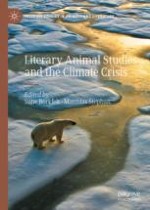2022 | OriginalPaper | Buchkapitel
Resurrecting Species Through Robotics: Animal Extinction and Deextinction in Do Androids Dream of Electric Sheep?
verfasst von : Dolly Jørgensen
Erschienen in: Literary Animal Studies and the Climate Crisis
Aktivieren Sie unsere intelligente Suche, um passende Fachinhalte oder Patente zu finden.
Wählen Sie Textabschnitte aus um mit Künstlicher Intelligenz passenden Patente zu finden. powered by
Markieren Sie Textabschnitte, um KI-gestützt weitere passende Inhalte zu finden. powered by
